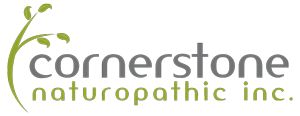The shoulder is one of the most flexible joints in our entire body. This is due to the fact that it is a ball and socket joint. The head of the arm bone (humerus bone) sits inside the socket of the shoulder which allows it to rotate through a very large range of motion. As a result of its flexibility and the amount of use and strain which we all place upon our shoulders it is often one of the most injured joints of the body.
Due to its high injury rate I treat patient’s shoulders on a regular basis. There are many types of shoulder injuries ranging from rotator cuff injuries, frozen shoulder, bicep tendonitis, to tears and strains on ligaments, all of which cause significant decreased range of motion as well as a significant decrease in quality of life. Shoulder injuries have a massive impact on activities of daily living. With a shoulder injury, simple tasks such as reaching up to get a glass out of a cupboard can be impossible, let alone grab a carton from the fridge or even put on a shirt. Due to these effects on quality of life and activities of daily living, patients almost always search out effective treatments which will help their shoulder and thus increase their quality of life.
GOALS OF TREATMENT
When treating a patient’s shoulder, I always assess and identify exactly what is injured and which movements are impaired. I then combine this information with my patients own goals and assemble a treatment plan. Depending on the timeline of the injury there may be different treatment goals. For example, if a patient injured their shoulder the previous evening playing hockey than goal of treatment is to decrease inflammation, identify which muscles, ligaments and/or tendons have been injured, speed healing and prevent further injury as well as increase patients comfort. If a patient shows up months after an injury complaining of pain and decreased range of motion than treatment goals are to heal the nerves which are causing the pain and increase range of motion.
How Can Shoulders Be Fixed?
ACUTE INJURIES
In the early stages of shoulder injuries focus is placed on healing the tissues which have been injured. This is done by increasing blood flow to the injured area as well as ensuring that the body has everything it requires to regenerate and replace any damaged tissues. Proper nutrition plays an important role in how quickly the body will heal as well as proper supplements to increase healing while decreasing and preventing scar tissue formation. These treatments combined with acupuncture, hydrotherapy, eletrostim and gentle joint mobilizations all work towards healing the shoulder as quickly as possible.
CHRONIC INJURIES
Often patients come to me complaining of injuries which have occurred months ago but have not yet healed completely or returned to 100% normal despite numerous interventions and 3x/week appointments with other practitioners. Months after an injury the tissues should be completely healed and thus treatment is not aimed at healing the tissues but instead is focused at the root cause of the pain, which is inflamed nerves. Without nerves, we would have no sensation, let alone control of any part of our body. Often nerves are damaged when there is an injury, however they do not heal as quickly as muscle tissue and can continue to send pain signals to the brain long after the injury has healed. This type of pain is referred to as neuropathic pain.
Neuropathic pain is a severe and debilitating pain that can render patients unable to walk, work, sleep or enjoy life. This is an area of pain which I personally focus on and am very experienced in treating. I have had excellent results in healing the peripheral nervous system, which when healed extinguishes the pain. To heal the nervous system and extinguish pain, one has to have extensive knowledge of where the nerves are, which muscles they control and where the nerves are most likely to be damaged. Only after knowing this information is treatment initiated.
NEUROPROLO THERAPY
Treatment of neuropathic pain is done using neuroprolo therapy (NPT). NPT is the injection of 5% dextrose (glucose) directly to the damaged nerve. The dextrose binds to the TRPV1 receptor which turns off the pain signal being sent to the brain thereby eliminating pain. It also helps the nerve to regenerate and heal. Pain is eliminated instantly and patients can except to be pain free for up to 4 days after just one treatment. Treatments are normally once per week for a few weeks until the nerve is healed. After each treatment patients report being pain free longer. Once the nerves are healed and the pain eliminated treatment is terminated.
Neuroprolo therapy is not the type of treatment that takes 3-6 treatments before patients see results. If after 1 treatment there is no improvement than other treatments are recommended.
PROLOZONE THERAPY
If there has been significant trauma to the shoulder joint itself and not only the muscles and tendons surrounding the joint than prolozone therapy is recommended. Prolozone therapy is the use of 15-25% dextrose combined with oxygen and ozone which is injected into the shoulder joint. The high concentration of dextrose causes inflammation in the joint which increases blood flow and brings much needed nutrients so that the joint can heal. One of the reason for which joints take a long time to heal is that they do not have a large amount of blood flow. This severely limits the amount of nutrients delivered to the joint which prevents the joint from healing quickly. Prolozone is administered once every 2 weeks until the joint is healed completely.
For more information on Dr. Ben visit his website at www.drbenconnolly.ca
If you are in pain or are suffering from shoulder pain which is affecting your ability to walk, work, sleep or enjoy life, than call me today and lets work together to eliminate your pain and increase your quality of life.





